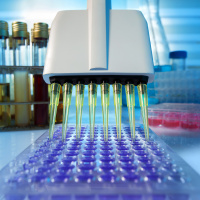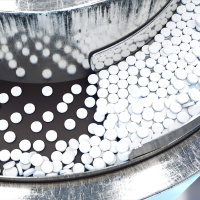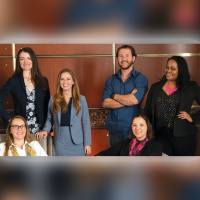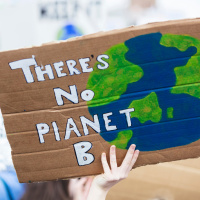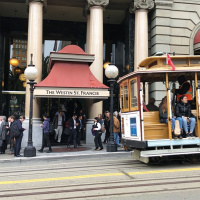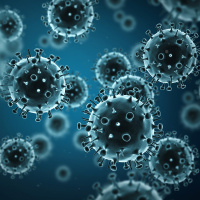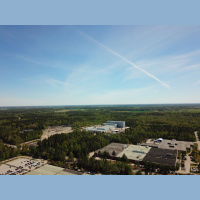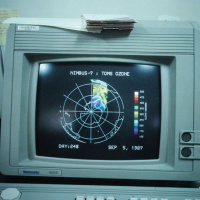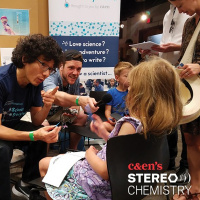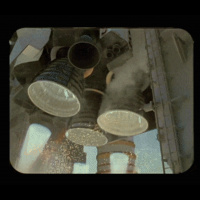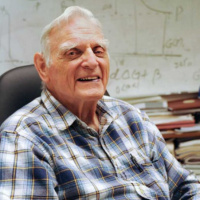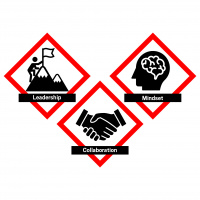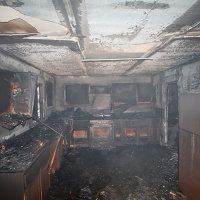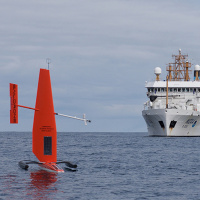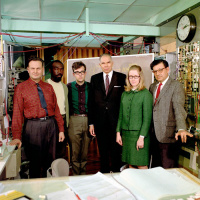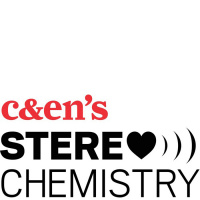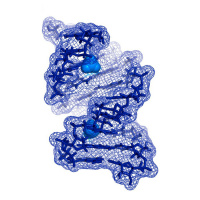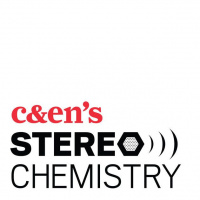Sinopsis
Stereo Chemistry is chemistry news told by the people making it. C&EN is the news magazine of the American Chemical Society.
Episodios
-
Ep. 28: So that's why we threw a robot into the back of a truck
18/03/2020 Duración: 35minChemistry is going the way of computing: It’s getting smaller and faster. High-throughput experimentation, or HTE, is part of this push. Borrowing from biologists and biochemists, HTE has brought in microplates and multichannel pipettes to miniaturize reactions, as well as robots to run those reactions rapidly without sacrificing precision. But it’s also been around for decades. So why are so many in the field excited about HTE right now? Stereo Chemistry looks at the technology and culture shift behind the current buzz. See more at cenm.ag/showmetherobots. Nominate an amazing early-career chemist for our annual Talented 12 feature at cenm.ag/t12nom Photo credit: Shutterstock
-
Bonus episode: We’re watching it very closely
10/03/2020 Duración: 14minAs the novel coronavirus responsible for causing COVID-19 continues to spread, questions about the virus, the disease, and its impacts on our daily lives mount. To help you stay current with the science, policy, and business implications of this outbreak, C&EN has made all of its coronavirus coverage freely available at cenm.ag/coronavirus. And in the latest bonus episode of Stereo Chemistry, we discuss one of the largest questions on the business front: How is the coronavirus affect-ing the global drug supply? UPDATE: This podcast was updated on March 18, 2020 to help ensure listeners are aware of the podcast's original publication date (March 10). Image credit: Shutterstock
-
Bonus episode: We saw a lot of that scientific sage savior syndrome
20/02/2020 Duración: 14minStereo Chemistry talked with six chemists who spent a year in Washington on a policy fellowship to find out what they learned and what advice they would give to other scientists who are interested in science policy. Check out Andrea Widener’s AAAS policy fellows story on C&EN at https://cen.acs.org/policy/Lessons-learned-from-a-year-in-Washington/98/i4. And learn more about the AAAS Science and Technology Policy Fellowship at https://www.aaas.org/programs/science-technology-policy-fellowships. Photo credit: James Kegley
-
Ep. 27: The earth is going to be fine; what we’re saving is ourselves
10/02/2020 Duración: 26minClimate change is on the public’s mind, thanks in no small part to the efforts of Swedish activist Greta Thunberg and protests and rallies involving young people around the world. In the latest episode of Stereo Chemistry, host Kerri Jansen talks to early-career researchers developing the tools and knowledge we’ll need to thrive in a changing climate. These scientists are part of a generation who will experience the effects of climate change throughout their lifetimes. They share what drew them to climate science and what keeps them motivated when the questions—and the obstacles—are so vast. A script of this episode is available at cen.acs.org/environment/climate-change/Podcast-5-climate-scientists-share/98/i6 Read C&EN’s special issue on climate change adaptation at cenm.ag/adapt Image credit: Ink Drop/Shutterstock
-
Bonus episode: It's this big, giant brouhaha of pharmaceutical companies
03/02/2020 Duración: 10minM&A, the FDA, and an empty elevator. In this bonus episode, C&EN reporters Ryan Cross and Megha Satyanarayana share their takeaways from their time at the J.P. Morgan Healthcare conference a few weeks ago. Read more about JPM 2020 here: https://cen.acs.org/business/investment/JP-Morgan-Healthcare-Conference-slow/98/i3 Image credit: Credit: Megha Satyanarayana/C&EN
-
Ep. 26: Evolution is kind of the be all end all in the problem of influenza
31/01/2020 Duración: 33minAlthough the Wuhan coronavirus is currently dominating headlines across the globe, influenza kills hundreds of thousands of people worldwide each year. In the US, millions of people roll up their sleeves annually for a flu shot. But this ritual is confusing for many. Why is it that most vaccines are effective for a lifetime while the flu vaccine is only effective for a year? And why do we sometimes get the flu even when we’ve gotten the vaccine? The answer is evolution: the flu is constantly evolving to evade our immune systems. In this episode of Stereo Chemistry, scientists who study flu evolution and pandemics explain what makes fighting the flu so difficult. For more, visit cenm.ag/flucast. Image credit: US Army photographer
-
Bonus episode: All this is happening at Northvolt speed
22/01/2020 Duración: 11minLate last year, C&EN contributing editor Mark Peplow toured a new battery company’s R&D facility in Sweden. That company, called Northvolt, aims to produce the world’s greenest lithium-ion batteries, to help meet the growing demand for electric vehicles. Ride along with Mark to learn more about the company, its work, and its goals in the first bonus episode of Stereo Chemistry. Check out Mark's full story for C&EN here: https://cen.acs.org/energy/energy-storage-/Northvolt-building-future-greener-batteries/97/i48 Image credit: Northvolt
-
Ep. 25: It was like, bam, half the ozone layer over Antarctica is gone
20/12/2019 Duración: 25minThe discovery of the ozone hole in the mid-1980s sent shock waves through the scientific community and society at large. As scientists scrambled to make sense of the unprecedented phenomenon, a clear culprit emerged. Chlorofluorocarbons (CFCs)—once thought of as near-miraculous compounds that revolutionized refrigeration—were suddenly revealed to be one of the biggest environmental dangers known to humankind. What followed was an international push by scientists, media, and policy makers to ban CFCs. In October 2019, NASA announced the ozone hole is the smallest recorded since 1982. In this episode of Stereo Chemistry, we hear from some of the scientists who were instrumental in discovering—and helping heal—the ozone hole and who think lessons learned could help us fight climate change. A script of this episode is available here. To read more from C&EN on hot trends in chemistry, check out our 2019 Year in Chemistry issue at cenm.ag/yic2019. Image credit: D. Murphy/NOAA
-
Ep. 24: Kids are happy to get to ask whatever they want
26/11/2019 Duración: 23minFor its latest episode, Stereo Chemistry handed its recorders over to kid journalists interviewing grown-up chemists about cutting-edge research. Listen in as the children get answers to questions about DNA, environmental clean-up, and even C-H activation. The kids’ reporting was part of an outreach event called Science Storytellers that took place during the American Chemical Society National Meeting in San Diego in August. Science Storytellers empowers kids to ask questions as they interact, one-on-one, with real scientists. In this episode, you’ll hear from the creator of the Science Storytellers program, Jenny Cutraro, to learn how this outreach activity is designed to break down barriers between scientists and the public. For a full transcript and additional resources, visit our website. And here's our Facebook Live event from the ACS Kid Zone.
-
Ep. 23: That’s a hell of a lot of explosive material
18/10/2019 Duración: 35minRocket propellant research had its heyday in the mid-20th century, when the space race and the Cold War meant chemists had plenty of money and long leashes. Few of their most interesting ideas ended up in working rockets, but they charted new areas of chemical space, some of which, like boron chemistry, have proved useful in other fields. Geopolitical shifts, along with a growing emphasis on health, safety, and the environment, dampened propellant chemistry in the last decades of the 1900s. But the need for high-performance propellants hasn’t gone away, and neither has chemists’ interest in pushing the envelope. In this episode of Stereo Chemistry, we hear from chemists who lived through the heady days of the ’50s and ’60s and the ones carrying rocket chemistry’s torch today. A script of this episode is available here. Music credits: “Leaving Earth” by Stanley Gurvich “Plain Loafer” by Kevin MacLeod Rocket launch sound illustration adapted from NASA audio Image credit: NASA
-
Ep. 22: I didn’t know they were going to be worth billions—A conversation with John Goodenough
29/08/2019 Duración: 34minWithout fail, the name John Goodenough crops up during Nobel Prize season. Many scientists believe he’s deserving of chemistry’s top honor. The University of Texas at Austin materials scientist is credited with developing a material that led to mass commercialization of lithium-ion batteries, the technology that powers our smartphones, laptops, electric vehicles, and other gadgets big and small. Though Goodenough, aged 97, hasn’t yet won a Nobel Prize, he’s not mired down by what could have been. He is renowned for his scientific accomplishments, warm personality, and infectious laugh. In this episode of Stereo Chemistry, C&EN reporter Mitch Jacoby joins cohost Kerri Jansen to tell the story of how a former meteorologist with a background in physics came up with a key material that enabled an electronics revolution and how he continues to pursue big questions in electrochemistry today. Register for C&EN’s Nobel Prize predictions webinar at bit.ly/nobelwebinar19. UPDATE: We're happy to announce tha
-
Ep. 21: Culture always starts at the top, but it also starts from the bottom
09/08/2019 Duración: 43minIn our last episode of Stereo Chemistry, we talked to chemists who had survived accidents at the bench to learn what went wrong and what lessons we could share to improve lab safety. In this episode, we’re looking at what it takes to build a culture of safety. That is, what can organizations do to let researchers know that their safety is not only valued, but expected? Hosts Jyllian Kemsley and Matt Davenport talk to experts about the importance of leadership, commitment, and education to transform lab safety from an exercise in compliance to a core element of the central science. Find the transcript for this episode on our webiste. Visit ACS Webinars to learn more about their excellent programming. Music credits: “Played by Ear” by Unheard Music Concepts is licensed under CC BY 4.0. “Compassion (keys version),” “Let That Sink In,” and “Thought Bubbles” by Lee Rosevere are licensed under CC BY 4.0. Image credit: Shutterstock/C&EN
-
Ep. 20: What happens when you take risks?
24/07/2019 Duración: 38minResearch science is full of hazards. Chemists and safety professionals do their best to minimize the danger, but accidents do happen and the stakes can be extremely high. So how can chemists ensure that when things do go wrong—or when they nearly go wrong—that we learn from those experiences to work toward a safer future? Communication is key. In this episode of Stereo Chemistry, we talk with four chemists who have survived accidents and shared their stories so others can learn from them. Read the full transcript of this episode here. Nominate a Start-Up to Watch by August 1! Music credits: "Pure Water" and "Interplanetary Forest" by Meydän are licensed under CC BY 4.0. "Let That Sink In" and "We Don't Know How it Ends" by Lee Rosevere are licensed under CC BY 4.0. "Blue Lobster" by Daniel Birch is licensed under CC BY 4.0. Image credit: Shutterstock/C&EN
-
Ep. 19: This is a mess. But there might also be gasoline in here.
22/06/2019 Duración: 40minIn the aftermath of a building fire, investigators study the scene for clues to the fire’s cause. They look for burn patterns and suspicious materials while chemists search charred debris for traces of flammable liquids. But investigating fires is not as straightforward as it once was, because investigators now know more about the complexity of how fires burn. In this episode of Stereo Chemistry, host Kerri Jansen explores how scientists are working to better pinpoint specific chemicals amid the chaos a fire leaves behind and how a new understanding of the chemistry and physics of fire has revolutionized the way fire scenes are interpreted. Nominate innovative young companies for C&EN’s 10 Start-Ups to Watch feature at cenm.ag/startupnom. A script of this episode is available on our website. “Blonde” by Nctrnm is licensed under CC BY 4.0. “Plain Loafer” by Kevin MacLeod is licensed under CC BY 3.0. Image credit: UL FSRI
-
Ep. 18: Our job is to make sure we have the data
22/05/2019 Duración: 27minRobots in the ocean are giving scientists more details about processes above and below the surface that affect our weather, our food supply, and more. They’re also helping chemical oceanographers understand and record the effects that climate change is having on our waters. The past 2 decades have seen a growing fleet of uncrewed research vessels and a proliferation of chemical sensors, which together are giving chemical oceanographers access to an unprecedented wealth of data. That’s changing not just the way they think the oceans work but also how they themselves work. In this episode, pioneers of ocean robotics and scientists developing new sensors for the crewless vehicles tell tales of that work. And hacky sacks. For a script of this podcast and a video of a sail drone, visit our website. Music credits: “Blind Love Dub” by Jeris is licensed under CC BY 3.0 “Morning Cruise,” “September Sky,” and “Dance of the Pixies” by Jens Kiilstofte are licensed under CC BY 4.0. “Where Was I?” by Lee Rosevere is licen
-
Ep. 17: If you want to change the element, you have to change the nucleus
21/04/2019 Duración: 31minIn honor of the International Year of the Periodic Table, Stereo Chemistry explores the stories behind some of the elements in this episode. C&EN and ACS on Campus hosted periodic table pub trivia during the ACS Spring 2019 National Meeting in Orlando, Florida. Inspired by the event, its participants, and its questions, host Kerri Jansen investigated what it takes to make a new superheavy element, starting a half century ago and tracking the making of new elements through time. She tells the tales of scientists commonly associated with shaping the periodic table but also of the unsung heroes behind the scenes. A script of this podcast is available at our website. Read all of C&EN's International Year of the Periodic Table stories. Sign up for C&EN’s weekly newsletter at bit.ly/chemnewsletter. Music credits: “Rewound” by Chris Zabriskie is licensed under CC BY 4.0. “Plain Loafer” by Kevin MacLeod is licensed under CC BY 3.0. Image credit: Lawrence Berkeley National Laboratory/The Regents of the Un
-
Ep. 16: It’s all of these things that none of us get trained for
17/03/2019 Duración: 27minBeing a chemistry professor is Jen Heemstra’s dream job. How she got there was a bit of a nightmare. But now she’s running her own team at Emory University and has become a social media celebrity by sharing her experiences and leadership advice on Twitter. She credits her personal tragedy and professional setbacks for making her who she is today. In the latest episode of C&EN’s Stereo Chemistry podcast, we spent two days with Heemstra and her team to learn more about her and her approach to graduate education. Heemstra’s adversity has not only shaped her attitude but also how she runs her lab. She’s helping her students develop skills that go beyond the bench—things like how to manage motivation, how to develop research ideas, and how to write grants. Listen now to hear more about Heemstra’s journey and philosophy. Here's a link to Jen’s PhD Balance post on Instagram (PhD Balance was formerly The PhDepression). Ask Jen a question for her Office Hours column! Nominate an early-career chemist for this yea
-
Ep. 15: Being scientists together in a relationship is the very best thing in the world
10/02/2019 Duración: 29minThey say love is a many-splendored thing, and we have to agree. In the latest episode of Stereo Chemistry, love unites rotovap romance, intimate feelings formatted for the Journal of the American Chemical Society, and the slow but tireless march of equality. C&EN spoke with five chemistry couples about their love stories, as well as what advice they have for those trying to give love a chance in a science, technology, engineering, and mathematics (STEM) profession. You’ll hear real talk about fears and doubts, about struggling with work-life balance, and about solving the two-body problem. And you’ll also hear some of the cutest gosh-darn stories we’ve ever had the privilege of sharing. Read a script of this podcast on our website. Music credits: “In Your Arms” by Kevin MacLeod is licensed under CC BY 3.0. “Plain Loafer” by Kevin MacLeod is licensed under CC BY 3.0.
-
Ep. 14: On the face of it, RNA is a terrible drug target
03/01/2019 Duración: 32minRNA should be a terrible drug target. It’s long, noodle-like structure lacks the nooks and crannies that small molecule drugs use to grab onto proteins and thereby control them. But a decades-old disregard for RNA is starting to change. In August 2018, the US Food and Drug Administration approved the first-ever RNA interference (RNAi) drug, which uses a double-stranded RNA molecule to prevent the production of disease-related proteins. In the past two years, several startups have launched to show that some RNAs can, just like proteins, be drugged with small molecules. And a third group of companies recently emerged with plans to drug proteins that make modifications to RNA, part of the budding field of epitranscriptomics. In this episode, C&EN visits Alnylam Pharmaceuticals, Novartis, and Accent Therapeutics to discuss these three strategies, and to understand how RNA-modulating therapies will compete in the wider world of drug discovery. Visit our website for a script of this podcast. Music credits: “And
-
Ep. 13: Kind of a schlepping sound
15/12/2018 Duración: 18minClosing out the inaugural year of Stereo Chemistry, host Kerri Jansen and C&EN reporter Tien Nguyen share a collection of stories about ways of distilling complex chemistry. Join us for a resonant take on organic chemistry reactions, an abridged explanation of some Nobel Prize–winning work, and the story behind a chemical earworm. A script of this episode is available at cen.acs.org/education/science-communication/Finding-fun-ways-simplify-complicated/96/web/2018/12. Read about the year’s most memorable chemistry at cenm.ag/yic2018. Other stories referenced in this episode: Unusual mash-ups of art and science | C&EN https://cen.acs.org/articles/96/i9/Unusual-mash-ups-art-science.html Frances H. Arnold, George P. Smith, and Gregory P. Winter share 2018 Nobel Prize in Chemistry | C&EN https://cen.acs.org/biological-chemistry/Frances-H-Arnold-George-P-Smith-and-Gregory-P-Winter-share-2018-Nobel-Prize-in-Chemistry/96/web/2018/10 How is directed evolution changing the world? | C&EN https://cen.acs.

